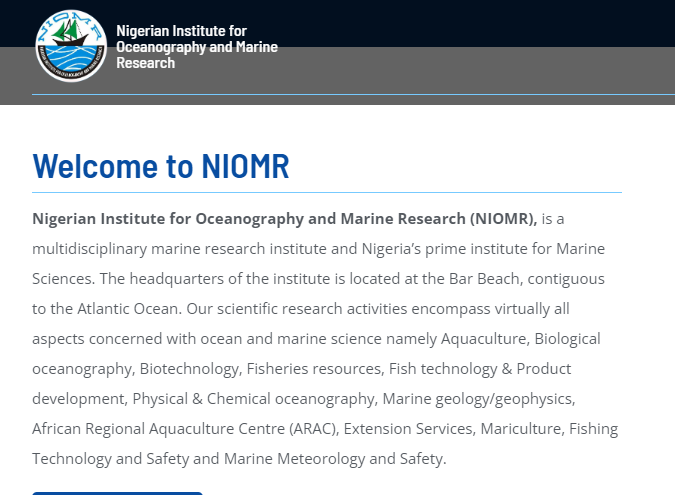The landscape of skilled trades in the United States is evolving rapidly, driven by demographic shifts, technological advances, and increasing demand for specialized labor. As the nation strives to rebuild its infrastructure and boost economic productivity, skilled trades jobs have become one of the most promising avenues for both domestic workers and international talent seeking visa sponsorship. In 2025, visa sponsorship programs are set to expand, offering more opportunities for skilled workers from around the globe to contribute to the U.S. economy. This article delves into the current trends, processes, and opportunities within the skilled trades sector, while also providing practical insights into navigating the visa sponsorship landscape.
In today’s competitive market, visa sponsorship is not merely an immigration benefit—it’s a vital bridge that connects international expertise with American industry needs. Skilled trades encompass a wide variety of sectors, from construction and industrial maintenance to culinary arts and agricultural services. The increasing reliance on these professions stems from a combination of retiring workers, evolving technology that demands updated skill sets, and the globalization of the labor market. For example, there is an ever-growing need for entry-level professionals who can enter the workforce with sponsorship support, as seen in opportunities such as Janitor Jobs in the USA with Free Visa Sponsorship, which highlight the diversity of roles available even in sectors often overlooked.
This article is designed to offer a comprehensive overview of skilled trades jobs available in the USA in 2025, the intricacies of the visa sponsorship process, and strategies for successfully landing a position. Throughout the discussion, we integrate real-world examples and provide valuable resources—including tables detailing job categories and salary expectations—to help job seekers and employers navigate this dynamic field.
Results
#1. How do you feel about starting life in a completely new country?
#2. How do you handle change and uncertainty?
#3. What kind of work environment do you enjoy most?
#4. Which of these sounds most like your dream opportunity abroad?
#5. What motivates you to move abroad?
The Growing Demand for Skilled Trades in the USA
As the U.S. economy rebounds and infrastructure projects ramp up, the need for skilled trades professionals has never been more pronounced. Industries such as construction, manufacturing, logistics, and service sectors are experiencing a labor shortage, compelling companies to look beyond domestic pools and consider international candidates. This surge in demand is also prompting companies to enhance their recruitment processes and offer attractive visa sponsorship packages to secure talent.
Over the past decade, the United States has seen a significant transformation in its approach to immigration for skilled labor. The modern U.S. visa system now emphasizes specialized qualifications, certification processes, and compliance with rigorous safety and labor standards. Such shifts underscore the importance of continuous professional development and training in the skilled trades sector. Many employers are now collaborating with trade schools, community colleges, and apprenticeship programs to ensure that workers are well-equipped with up-to-date technical skills and industry-specific certifications. This proactive approach not only benefits the workers but also strengthens the competitive edge of American businesses in a global market.
In this context, visa sponsorship becomes a strategic tool for both employers and employees. Companies gain access to a broader talent pool, while workers obtain a pathway to career growth and permanent residency. A notable example of these collaborative efforts is the program highlighted in Top 5 Entry-Level Visa Sponsorship Jobs in Canada, which, while Canadian in scope, reflects the broader trend of sponsorship opportunities that are increasingly relevant in the U.S. skilled trades market.
Navigating Visa Sponsorship for Skilled Trades
For many international workers, understanding the visa sponsorship process is as critical as mastering a trade. The process can be multifaceted, involving employer petitions, government approvals, and compliance with labor laws. In the United States, visa categories such as the H-2B for temporary non-agricultural workers and the EB-3 for skilled workers play central roles in facilitating employment-based immigration. Each category has its own set of eligibility requirements, processing times, and documentation standards, making it essential for both employers and job seekers to be well-informed.
Employers seeking to sponsor skilled trades workers must first demonstrate that there are no qualified U.S. workers available for the job. This labor certification process is rigorous and demands thorough documentation of recruitment efforts. Once certified, the employer can file a petition with U.S. Citizenship and Immigration Services (USCIS). The subsequent visa interview and processing stages require a careful review of the candidate’s qualifications, work history, and educational background. For many applicants, partnering with immigration experts or specialized legal advisors can simplify this daunting process. In addition, technology and digital platforms are increasingly playing a role in streamlining application procedures, making the entire process more transparent and efficient.
A recent case study in the skilled trades sector demonstrates how employers and workers can successfully navigate these challenges. By leveraging modern recruitment strategies and digital tools, a mid-sized construction firm was able to reduce its visa processing time by nearly 30%. Such success stories underscore the potential benefits of embracing both technological innovation and international talent. This model is reminiscent of the process described in Visa-Sponsored Waiter Jobs in Canada for Immigrants, where clear guidelines and robust support systems helped bridge the gap between international applicants and domestic job requirements.
Opportunities in Industrial and Warehouse Trades
The industrial and warehouse sectors have long been the backbone of the U.S. economy, and they continue to be a fertile ground for skilled trades professionals. With increasing investments in logistics, supply chain management, and automation, these industries are actively seeking workers who can adapt to technological advancements and ensure operational efficiency.
One of the critical roles in these sectors is the warehouse operative, where workers are responsible for a range of tasks from inventory management to equipment maintenance. Given the rigorous demands of these jobs, employers often offer comprehensive training programs and competitive compensation packages. The incorporation of automation and smart technologies further increases the importance of technical proficiency in these roles, making them ideal candidates for visa sponsorship.
Below is a table summarizing key positions in the industrial and warehouse category, complete with salary expectations:
| Job Title | Salary Expectation (USD) |
|---|---|
| Visa Sponsorship Warehouse Jobs in Canada for Immigrants | $30,000 – $50,000 |
| Truck Driver Jobs in Canada with Visa Sponsorship for Foreigners | $40,000 – $65,000 |
The salary ranges in the table provide a general overview of what skilled workers might expect in these roles. Although the job links point to Canadian opportunities, the salary trends and sponsorship mechanisms are very much applicable to similar positions in the United States. Many U.S. companies mirror these compensation structures, especially when they seek to attract a high caliber of international talent. By understanding these trends, both employers and workers can better position themselves in a competitive labor market.
For instance, an emerging trend in the logistics sector involves integrating advanced inventory systems that require both manual dexterity and technological competence. Companies adopting these systems are more likely to extend sponsorship to skilled individuals who can bridge the gap between traditional manual operations and modern automated processes. A practical illustration of such innovation can be found in initiatives similar to Truck Driver Jobs in Canada with Visa Sponsorship for Foreigners, which emphasize the balance between technical skills and regulatory compliance.
Culinary and Hospitality Trades: A Niche Opportunity
The culinary and hospitality industries have evolved well beyond traditional kitchens and dining rooms. With the globalization of cuisine and the increasing importance of service excellence, skilled trades within this domain are becoming highly competitive and in demand. Chefs, line cooks, and hospitality managers are now expected to combine culinary artistry with business acumen and customer service skills.
For many international culinary professionals, securing a visa sponsorship can be a transformative opportunity. The U.S. hospitality sector is renowned for its diversity, innovation, and quality, making it an attractive destination for culinary talent from around the world. Employers in this sector are keen to hire individuals who not only bring technical expertise but also introduce new flavors, techniques, and cultural perspectives to the American market.
To illustrate, consider the evolving role of a chef in a modern American restaurant. Today’s chefs are expected to be both creative and business-savvy, often taking on responsibilities that extend to menu design, supply chain management, and even front-of-house operations. With robust visa sponsorship programs, restaurants and culinary institutions can access a global talent pool that enriches their culinary offerings and operational capabilities.
The table below outlines key positions in the culinary and hospitality trades, including salary expectations:
| Job Title | Salary Expectation (USD) |
|---|---|
| Chef Jobs in Canada for Foreign Workers with Visa Sponsorship | $35,000 – $60,000 |
| Visa-Sponsored Waiter Jobs in Canada for Immigrants | $25,000 – $45,000 |
These roles are emblematic of the broader trends in hospitality. While the positions listed are based on opportunities in Canada, the underlying principles of skill demand, compensation, and sponsorship support translate seamlessly to the U.S. market. Restaurants across the United States are increasingly looking for dynamic professionals who can adapt to fast-paced environments and help elevate the dining experience. Initiatives that support international chefs are similar in spirit to Chef Jobs in Canada for Foreign Workers with Visa Sponsorship, underscoring the global appetite for culinary excellence.
Furthermore, many U.S. employers in the hospitality field are expanding their outreach to include digital platforms, which facilitate a smoother application process and ensure that only the most qualified candidates are considered. This digital transformation is particularly evident in high-traffic metropolitan areas, where culinary diversity is both a cultural asset and a competitive business advantage.
Agricultural and Educational Trades: Expanding Horizons
Beyond the well-known industrial and hospitality sectors, the agricultural and educational trades represent two areas where skilled workers with visa sponsorship can make a significant impact. Agriculture remains a cornerstone of the U.S. economy, while educational roles, particularly in vocational training, ensure the continuous development of future tradespeople.
Agricultural work, often perceived as labor-intensive and seasonal, is undergoing a technological revolution. Modern farming techniques now integrate robotics, precision agriculture, and data analytics, which require a combination of traditional skills and modern technical know-how. Visa sponsorship programs in this sector are designed to attract workers who can operate advanced machinery, implement sustainable practices, and innovate in crop management.
Parallel to agriculture, the educational field—especially vocational education—plays a pivotal role in preparing the next generation of skilled trades professionals. Educators with industry experience and technical expertise are in high demand, as they provide the hands-on training essential for maintaining high standards in trades. By sponsoring foreign educators, U.S. institutions can enhance the quality of their training programs and bring fresh perspectives into the classroom.
The table below highlights key positions in the agricultural and educational sectors, along with their salary expectations:
| Job Title | Salary Expectation (USD) |
|---|---|
| Farm Worker Jobs in Canada with Visa Sponsorship | $20,000 – $35,000 |
| Teacher Jobs with Visa Sponsorship for Foreigners in Canada | $45,000 – $70,000 |
These roles underscore the expanding horizons within the skilled trades sector. Although the job posts point to Canadian opportunities, the U.S. market shares many similarities, especially in terms of salary structures and sponsorship benefits. The integration of technology in agriculture, for instance, mirrors efforts in other developed economies where modern equipment and precision farming have revolutionized traditional practices. Likewise, innovative educational programs in the U.S. are increasingly looking to global talent, much like those detailed in Teacher Jobs with Visa Sponsorship for Foreigners in Canada, to enrich their curriculum and training methodologies.
These developments have created a fertile environment for international collaboration. For example, agricultural firms in the U.S. are actively seeking partnerships with foreign experts to introduce new crop management techniques and sustainability practices. At the same time, educational institutions are embracing global perspectives by recruiting experienced professionals from abroad. This dual approach not only strengthens the workforce but also fosters an ecosystem of innovation and shared expertise.
Preparing for a Career in Skilled Trades with Visa Sponsorship
Securing a skilled trades job with visa sponsorship in the USA requires a strategic approach, combining technical proficiency with an in-depth understanding of the visa application process. Prospective applicants must focus on enhancing their skill sets, obtaining necessary certifications, and preparing comprehensive portfolios that showcase their expertise. Additionally, understanding the nuances of U.S. labor laws and immigration policies is crucial for navigating the sponsorship process successfully.
One of the first steps for job seekers is to obtain relevant trade certifications from accredited institutions. These certifications serve as a testament to a candidate’s technical competence and can significantly improve one’s chances of securing sponsorship. Equally important is the development of soft skills—communication, problem-solving, and adaptability—which are highly valued in a competitive, multicultural work environment.
Career fairs, online job portals, and professional networking platforms play a pivotal role in connecting skilled trades workers with potential employers. Many companies now host virtual recruitment events that allow international candidates to interact directly with hiring managers and immigration specialists. These interactions provide valuable insights into company culture, expectations, and the specifics of visa sponsorship programs.
To further illustrate, consider the digital outreach initiatives adopted by several U.S. employers. These companies are leveraging social media and online platforms to showcase their sponsorship opportunities and success stories. This approach not only broadens their recruitment base but also provides potential applicants with a clear understanding of the process. A relevant example from another market is highlighted in Hairdresser Jobs in Australia with Visa Sponsorship, which demonstrates the effectiveness of digital strategies in attracting international talent—a trend that is increasingly being mirrored by U.S. employers.
In addition, networking with alumni from vocational training programs and participating in industry forums can offer insights into best practices and potential pitfalls in the visa sponsorship process. Many skilled trades professionals also find it beneficial to consult with immigration attorneys or specialized agencies that can provide tailored advice and streamline the application process.
Looking Ahead: Trends and Predictions for 2025
The future of skilled trades jobs in the USA is poised for significant growth and transformation. As the nation continues to invest in infrastructure, renewable energy, and technological innovation, the demand for skilled labor will only increase. This expansion presents both challenges and opportunities for employers and international workers alike.
One key trend is the digital transformation of the recruitment process. The adoption of online application systems, virtual interviews, and digital credential verification is set to redefine how companies attract and vet international talent. Such advancements are not only streamlining the hiring process but also increasing transparency and efficiency in visa sponsorship procedures. Employers are now able to conduct comprehensive background checks and skills assessments remotely, thereby reducing the overall processing time.
Another trend is the increasing emphasis on diversity and inclusion. U.S. companies are recognizing that a diverse workforce brings unique perspectives and innovative solutions to complex challenges. In skilled trades, this diversity can lead to more creative problem-solving and a broader range of technical competencies. As such, employers are actively pursuing visa sponsorship programs to tap into a global pool of talent, ensuring that their teams reflect the multicultural landscape of today’s society.
Economic forecasts suggest that by 2025, skilled trades jobs with visa sponsorship will become a cornerstone of the U.S. labor market. In particular, sectors such as construction, renewable energy, and advanced manufacturing are expected to experience substantial growth. This positive outlook is further bolstered by supportive government policies aimed at addressing labor shortages and promoting economic resilience.
To encapsulate these trends, consider the recent initiatives in digital recruitment and workforce diversity. Many companies are now leveraging data analytics to predict skill shortages and plan their hiring strategies accordingly. These measures are similar to the strategies outlined in $70K Canada Visa Sponsorship Jobs in 2025 – Apply Now, where forward-thinking employers are investing in robust recruitment pipelines to secure top talent. Although the example originates from Canada, its core principles resonate deeply with the evolving U.S. market.
Moreover, the integration of advanced technologies such as artificial intelligence and machine learning in human resources is set to revolutionize how companies identify and engage with potential candidates. These tools can analyze vast amounts of data to match job seekers with opportunities that best align with their skills and career aspirations, thereby optimizing the visa sponsorship process.
Looking ahead, the continued evolution of skilled trades jobs with visa sponsorship is expected to lead to increased job security, higher wages, and improved working conditions. For international workers, these opportunities represent not only a career milestone but also a pathway to long-term stability and growth in one of the world’s most dynamic economies.
Conclusion
The dynamic intersection of skilled trades and visa sponsorship is reshaping the U.S. labor market as we approach 2025. With an increasing demand for specialized technical expertise and a global talent pool eager to contribute, the opportunities for international workers have never been more promising. From industrial and warehouse operations to culinary arts and agricultural innovation, the diverse spectrum of skilled trades offers myriad pathways for career advancement and personal fulfillment.
Understanding the intricacies of the visa sponsorship process—along with the trends driving demand—empowers job seekers and employers alike to navigate this evolving landscape effectively. As digital transformation and global recruitment strategies continue to mature, both parties will benefit from faster processing times, enhanced transparency, and a more inclusive workforce.
Whether you are an international professional aiming to secure a position in the U.S. or an employer looking to enrich your team with diverse skills, now is the time to embrace the opportunities presented by skilled trades jobs with visa sponsorship. The future is bright, and with careful planning, strategic partnerships, and continuous professional development, success is well within reach.
In summary, the evolving landscape of skilled trades in the USA—with robust visa sponsorship programs—presents a wealth of opportunities for workers from across the globe. By leveraging advanced recruitment strategies, embracing technological innovations, and focusing on continuous skill development, both employers and employees can thrive in a competitive, ever-changing market. The integration of digital tools and global perspectives is not only transforming how jobs are filled but also ensuring that the American workforce remains at the forefront of global innovation.
For further insights and real-world examples of successful visa sponsorship programs, keep an eye on evolving trends and case studies, and consider exploring related opportunities in other markets. Initiatives such as Teacher Jobs with Visa Sponsorship for Foreigners in Canada and Hairdresser Jobs in Australia with Visa Sponsorship serve as compelling reminders that the future of skilled trades is inherently global.
As we look toward 2025, it is clear that the convergence of technology, international talent, and supportive immigration policies will continue to drive innovation in the skilled trades sector. Embracing these changes not only enhances the competitive edge of American industries but also creates a more vibrant and resilient economy for the future.






